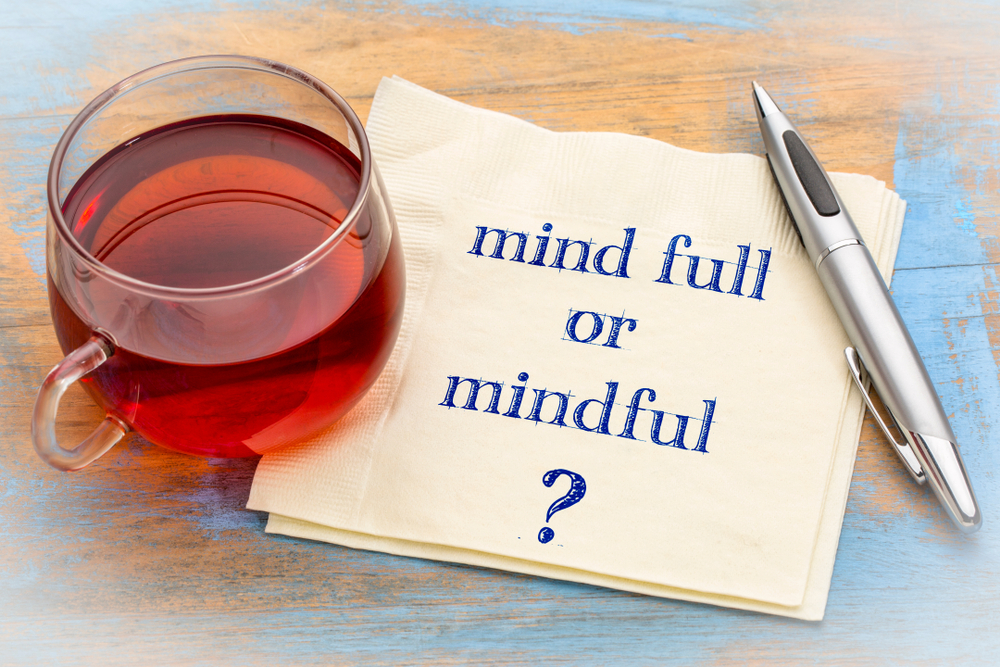Mindfulness is a practice that helps us become aware of the present moment; not just of what is happening around us, but also within us. It allows us to be more connected to life as it unfolds, as opposed to being caught up in the ruminations of our minds.
Have you ever been somewhere you really wanted to be, but not been able to enjoy the moment, due to the thoughts and worries in your head? Mindfulness can help us manage the flow of distractions, allowing us to be more present to everyday life; whether it is the big moments or the simple little ones, that can so easily be missed.

Below are some practices that can be integrated into a busy life. We suggest choosing one and establishing a routine, then integrating others. The important thing is to do the practices for a certain amount of time, regularly, to reap the benefits. They will then become habitual and part of a weekly routine.
1. Breath Observation
Breath observation is a simple technique that allows us to move away from the thoughts in our head. We simply focus the mind on the breath as a steady anchor. Some days our minds are still, like a calm sea, and other days our minds can be stormier. This is simply something to notice. Thoughts will arise and each time they do, we simply revert to the breath. It can be helpful to practice a nasal breath, which tends to help us with concentration. But if that is not comfortable, breathe in whichever way feels best. This can be practiced lying down, seated or standing, whether at home, in a park or on public transport.
Benefits – This is a way of creating some space in our busy minds, letting our thoughts rest, settle and slow down.
2. Mental labelling
In this practice, we label the thoughts, sensations and feelings that arise in our minds as they bubble up. It may look something like this: “warm, work, hungry, worry, kids” and so on. The idea is to observe what arises and then let it go. Something else will inevitably arise, which we can observe and let go. One can also use pen and paper and write things down. The idea is to observe, notice and acknowledge without getting wrapped up in a story, simply noticing the transient nature of thoughts, feelings and sensations.
Benefits – As we do this habitually, we become less overwhelmed by our thinking mind and more self-aware.
3. Mindful walking
While this is an ideal practice to do in nature, it can be practiced anywhere. It can be integrated when walking to work, on a lunch break or coming home after a long day. If you are working from home, integrating a mindful walk during the day can be a way of giving the mind a rest, getting a daily dose of exercise and connecting with life. While walking, take time to notice what is around you: the buildings, birds, sounds, people passing. Be present to what is there.
Benefits – This simple practice can help us gain mental clarity and reconnect with life.
4. Mindful eating
Choose a meal that you can eat peacefully. Take the food in visually, by observing what is on your plate. Notice the colours, consistency and any other aspects. As you take your first bite, become aware of the temperature, texture and flavours of the food. Eat slowly and mindfully, fully aware of the food you are eating. Practice this at least once a week. This awareness can be integrated into other daily practices, such as brushing teeth, having a shower or drinking tea.
Benefits – This practice allows us to become mindful of the small daily rituals and savour them. It takes us out of “auto-pilot” mode.
5. Practicing gratitude
Choose a time of the day to practice this and write down the things that you are grateful for each day. This can be practiced alone, with flat mates or as a family, sharing it around the dinner table. Having a gratitude journal or a jar where everyone can put a piece of paper with what they are grateful for can be helpful. Gratitude helps us put things into perspective.
Benefits – We have a tendency to focus on the challenges and difficulties leading to worry and stress. Shifting our focus can lead to a deeper sense of satisfaction and contentment.
Article written by Erika Shapiro, Yoga Teacher & Mindfulness Trainer, London


